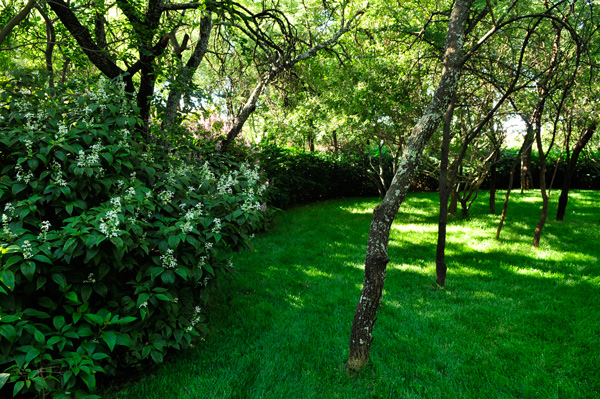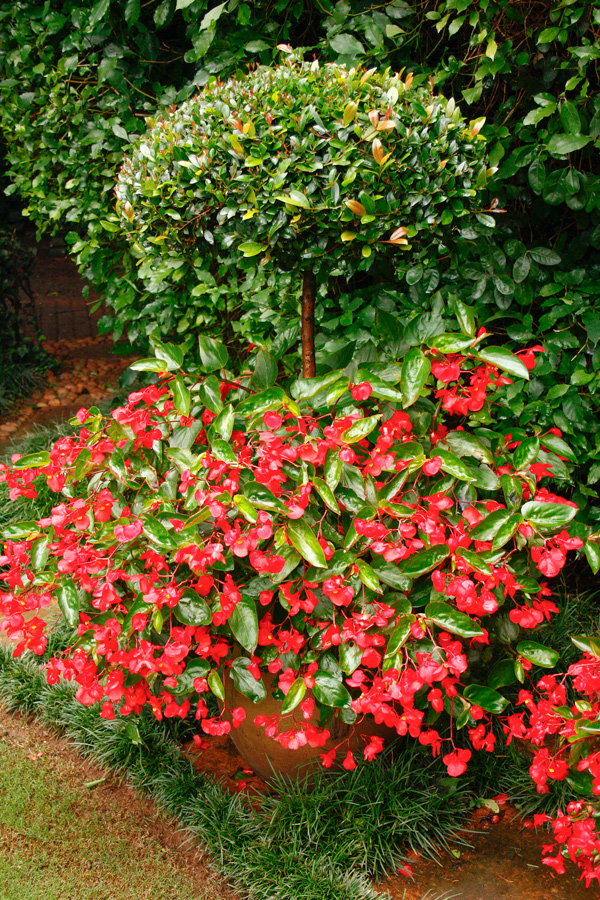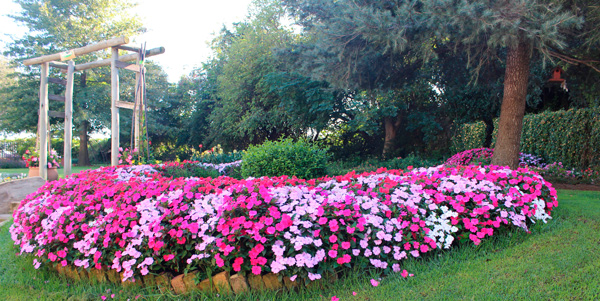While shade is very welcome in summer, too much can cause problems in the garden. Here are some solutions to common dilemmas
KEEP READING: IMPATIENS: A COLOURFUL SOLUTION FOR SHADE
The grass won’t grow under the trees
The good news is that there are a number of lawns that are specifically bred for shade. One is Shade-Over from Mayford which is a medium textured grass similar to kikuyu that keeps its colour throughout the year. Another option is LM grass, a coarser grass that spreads well and grows well from seed and from instant lawn. Always keep the grass longer in the shade as it needs the extra leaf blades to manufacture food.
You could also replace the grass under the trees with pavers set a few centimetres apart and interplant these with a groundcover like Mondo grass or wonderlawn. Or create an edging around the tree and fill the space inside with gravel.
YOU MIGHT LIKE: 4 Ideas for gardening with artificial grass

Dealing with root competition from trees
Shrubs in shady areas often have to compete with trees for food and water. One solution is to dig out the soil to a depth of around 50cm leaving the tree roots in place. Then lay thick plastic on the ground, moulding it around the roots. Punch holes in the plastic and fill with mixture of compost and garden soil with some fertiliser added. Then plant with shallow rooted plants. Another idea is to plant your favourite shade-loving shrubs in containers and place these in beds under the trees.

Begonias and a eugeni thrive in a container in the shade
READ MORE: 6 of the best tropical plants
Brightening shady areas
Shady spots can look gloomy and the quickest way to add colour is with seedlings. There’s a wide variety of annuals that thrive in shade and semi shade. Bedding begonias are popular as they flower right through summer to May or whenever the first frost hits. In warmer areas they flower all year round. There are also new varieties of disease-resistant impatiens including the New Guinea impatiens. These are ideal for producing masses of low spreading colour. They’re bigger than the old impatiens so you need fewer plants to fill the same space. They also look fabulous in containers and hanging baskets.

Big Bounce impatiens
TIP: You can let in more light by pruning the trees and lifting their canopy. Cut off the lowest branches and remove dead and broken branches. Trim branches evenly on all sides so that the tree doesn’t look lopsided. If the trees are large or old, then consult a professional arborist who will be able to recommend the best way to trim the tree and keep it healthy.

